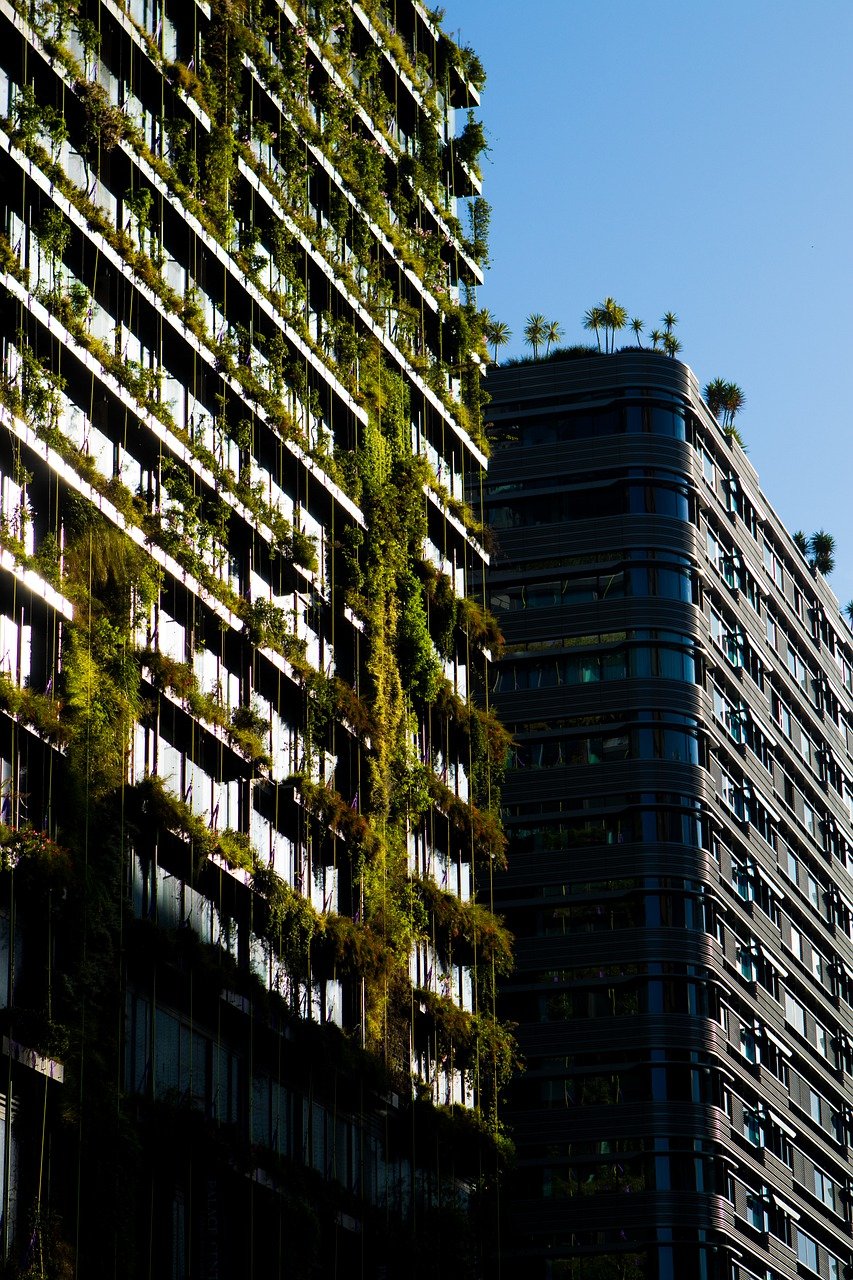Welcome, everyone! Sustainable architecture has become a hot topic in the world of design and construction, hailed for its environmental benefits and long-term cost savings. However, it’s essential that we understand not just the advantages but also the challenges associated with it. In this article titled “What Are The Disadvantages Of Sustainable Architecture?”, we delve into the often-overlooked drawbacks of such eco-friendly designs. From higher initial costs and complex planning requirements to potential limitations in material availability, we’ll explore how these factors can impact projects aimed at creating a greener future. Let’s dive in and uncover these important considerations together. Have you ever found yourself wondering about the disadvantages of sustainable architecture? As proponents of eco-friendly living and design, it’s easy for us to get swept up in the excitement and positivity surrounding sustainable architecture. However, like any approach, it comes with its own set of challenges and drawbacks. Let’s explore these disadvantages together and understand what we need to consider before fully embracing sustainable architecture.
High Initial Costs
Construction and Material Costs
One of the most significant disadvantages of sustainable architecture is the high initial costs. Sustainable materials often come with a premium price tag compared to traditional building materials. For example, reclaimed wood, recycled metal, and sustainably sourced bamboo can be more expensive due to the energy, labor, and transportation involved in their procurement.
In addition, the construction techniques required for sustainable buildings often differ from conventional methods. This necessitates specialized labor, which can also add to the overall cost. Green technologies like solar panels, geothermal systems, and rainwater harvesting systems can require substantial investment upfront.
Design and Planning Expenses
The planning phase for sustainable buildings can be more costly due to the need for comprehensive environmental assessments and certification processes. Hiring sustainability consultants, paying for certifications like LEED (Leadership in Energy and Environmental Design), and conducting environmental impact studies all add up. These preliminary expenses can be a barrier for many individuals and organizations.
| Expense Type | Traditional Architecture (Approx.) | Sustainable Architecture (Approx.) |
|---|---|---|
| Basic Material Costs | $50,000 | $70,000 |
| Specialized Labor | $30,000 | $50,000 |
| Green Technology Installation | $20,000 | $40,000 |
| Planning and Design | $10,000 | $20,000 |
| Total Initial Costs | $110,000 | $180,000 |
Longer Payback Period
Energy Efficiency and Savings
While sustainable architecture promises long-term savings through energy efficiency and reduced operational costs, the high initial investment can result in a longer payback period. Energy-saving technologies like advanced insulation, high-efficiency windows, and solar panels take time to recoup their costs through savings on utility bills.
Market Conditions and Technological Advancements
Market conditions and technological advancements can further complicate the payback period. Rapid advancements in technology might render some sustainable investments outdated before they have fully paid for themselves. Additionally, fluctuating energy prices can impact the rate at which cost savings are realized.
For instance, a significant drop in energy prices might extend the time it takes to see returns on investments in solar power or advanced HVAC systems.

Design and Aesthetic Challenges
Limited Material Choices
Sustainable architecture often necessitates the use of specific materials that are environmentally friendly or have a low carbon footprint. This can limit the range of design and aesthetic options available to architects and designers. Traditional architecture has the advantage of a vast array of materials to choose from, allowing for greater flexibility in design.
Balancing Sustainability and Aesthetics
Achieving a balance between sustainability and aesthetic appeal can be tricky. Green roofs, for instance, are fantastic for insulation and managing water runoff, but they might not always align with the desired look of a building. Incorporating large windows for natural light is another common sustainable feature, but it needs to be balanced with the need for wall space and insulation.
We often find ourselves at a crossroads, wanting both sustainability and a visually pleasing design, but sometimes compromises are necessary.
Regulatory and Compliance Issues
Building Codes and Standards
Sustainable architecture must adhere to various building codes and standards, which can vary widely by region. Navigating this regulatory landscape can be complex and time-consuming. Different jurisdictions may have different requirements for aspects like energy efficiency, water usage, and waste management, leading to potential delays and increased costs.
Certification Processes
Obtaining certifications for sustainable buildings, such as LEED or BREEAM (Building Research Establishment Environmental Assessment Method), involves intricate processes and strict adherence to guidelines. The effort to ensure buildings meet these certification standards can be daunting, requiring meticulous documentation, inspections, and verifications.
| Certification Type | Time to Obtain (Approx.) | Cost (Approx.) |
|---|---|---|
| LEED | 6-18 months | $25,000 – $100,000+ |
| BREEAM | 6-12 months | $15,000 – $75,000+ |
These regulatory requirements and certification processes, while crucial for guaranteeing the environmental performance of buildings, can pose significant hurdles.

Technological Dependencies
Reliance on Advanced Systems
Sustainable architecture often relies heavily on advanced technology systems for energy management, water conservation, and waste reduction. This reliance means that any malfunction or technological failure can severely impact a building’s sustainability credentials.
Maintenance and Upgradation
The advanced systems used in sustainable buildings typically require regular maintenance and periodic upgrades to keep them functioning optimally. Firms and individuals need to ensure they are prepared for the ongoing costs associated with maintaining these sophisticated systems. Not adequately maintaining these systems can lead to decreased efficiency and increased operational costs, counteracting the benefits of sustainability.
Limited Availability and Skilled Labor
Scarcity of Sustainable Materials
Sourcing sustainable materials can be challenging due to their limited availability. Sustainable materials often come from specialized suppliers located at a distance, increasing transportation costs and the carbon footprint. This scarcity can also lead to delays in project timelines and difficulties in procurement.
Skilled Labor Shortage
Building with sustainable techniques and materials requires specialized knowledge and skills. Unfortunately, there is still a relatively limited pool of workers trained in sustainable construction practices. This shortage can result in higher labor costs and potential delays in project completion.

Resistance to Change
Traditional Mindset
The construction industry has a long-established way of doing things. Shifting towards sustainable practices requires changes in mindset that can be met with resistance. Builders, architects, and clients accustomed to traditional methods might show reluctance to adopt new, sustainable practices due to unfamiliarity and perceived risks.
Education and Awareness
Promoting sustainable architecture requires significant efforts in education and awareness. Many stakeholders might not fully understand the benefits or might be skeptical about the effectiveness of green building practices. Overcoming this barrier involves continuous efforts in communication, training, and demonstrating successful case studies.
Environmental Impact of Construction
Temporary Environmental Disturbance
Ironically, the construction of sustainable buildings itself can have a temporary negative impact on the environment. The process of extracting and transporting sustainable materials, site preparation, and construction activities can disrupt local ecosystems and wildlife.
Lifecycle Considerations
Even though sustainable buildings are designed to minimize environmental impact over their lifespan, it’s essential to consider the total lifecycle of materials and systems used. Some environmentally friendly materials might have significant impacts during their production phase, which can offset some of the benefits gained during the operational phase of the building.
Conclusion
As we have explored, sustainable architecture offers numerous benefits, including energy efficiency, reduced environmental impact, and long-term cost savings, but it’s not without its challenges. The high initial costs, longer payback periods, regulatory hurdles, and technological dependencies can make adopting sustainable architecture a complex endeavor.
Understanding these disadvantages is crucial for making informed decisions and preparing for the potential challenges that come with sustainable building practices. Together, we can navigate these challenges and work towards a sustainable future while being mindful of the intricacies involved.
We hope this deep dive into the disadvantages of sustainable architecture has provided you with a balanced perspective. By acknowledging and addressing these challenges, we can work towards more effective and holistic solutions in sustainable design and construction.



